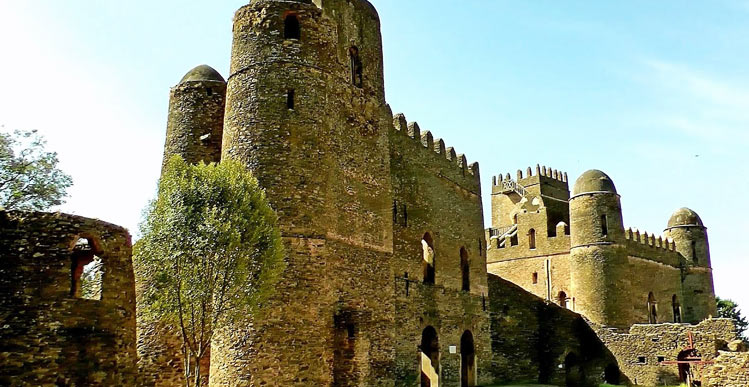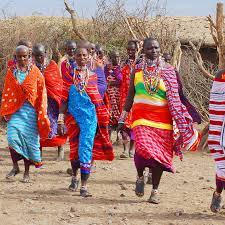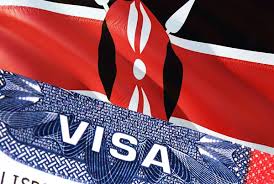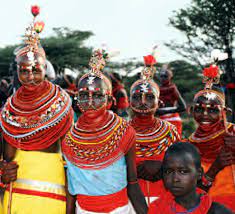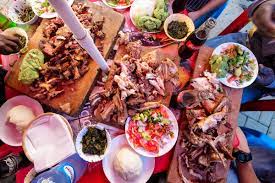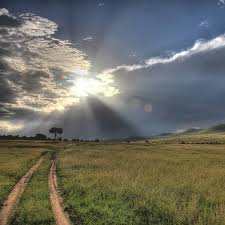Overview
Gondar or Gonder located at 725km from Addis Ababa, 175km from Bahir Dar and 120km from the Simien Mountainsat an elevation of 2133 masl. Until the seventeenth century, Ethiopia had no capital, as the empire’s rules moved about their territory living in tents in mobile royal camps while food being supplied by farmers around the camp. The history of Gondar City begins In 1636, Emperor Fasilides ended the tradition by decreeing Gondar to be the Ethiopia’s capital and started building a walled enclosure around his castle became the palace compound for half a dozen of different palaces 3 churches and support buildings built of two centuries by his successors. Most famous Gondar castles of Ethiopia are located in this 7 ha walled compound, the residence of Ethiopia’s government from seventeenth to the first half of the nineteenth centuries, now being part of the Gondar UNESCO World Heritage Site. Other monuments elsewhere in and around the city also belonging to this World Heritage Site are, Fasilides’ Bath and the Qusquam Enclosure with Mentewab’s Palace and St. Mary Church, the Debre Berhan Selassie Church, Kiddush Yohannes; the Sosinios Castle, also known as Maryam Ghemb, the Gorgora Church and the Palace of Guzara.
A picture is worth a thousand words. Most of our hundreds of pictures are favored in Google! Why? Because no other website has so many beautiful high resolution pictures, taken by ourselves. Our pictures not only show you the beauty of Ethiopia, but they also show that we go everywhere, photographing wildlife, plants, people and culture. They show our professionalism, our keen eye for detail and our passion for the culture and nature of Ethiopia. So why consider booking our our Ethiopia Culture & National Parks modules? Because we don’t mislead you like many tour operators do. When the Blue Nile falls are dry…. we tell you. When fog clouds the lava lake of Erte Ale? We let you know. Just drop us a mail and we will check it out for you. Our tours get you to ALL the cultural places Ethiopia is so famous for, and on top of that, you get to see up to 12 National Parks/Reserves accompanied by a conservation forester. There is nothing similar on the market. As Ethiopia can be combined with other East African countries, we organize tours in modules. Destinations Overview: Historical Circuit;Danakil Depression; Eastern Route; Simien Mountains; Bale Mountains; Southern Parks Safari; Gambella; Addis Ababa. BUT WAIT: if you buy your international ticket with Ethiopia Airlines, they will sell the internal flights at a price that you can’t even ride the bus for. But you MUST plan it all in one package and making changes may be very costly. So let us help you plan your entire trip and book your local flights for an incredibly low price after you booked your international flight with Ethiopian Airlines!
The 900m long battlemented wall of the palaces compound with turrets, 12 gates and 3 bridges protected the different castles, palaces and churches as they were added by the different royalties over time. Today one finds within the premises of this curtain wall: Fasilides Castle – or Enqulal Gemb (Egg Castle, for its egg-shaped domed roofs on the towers)-, Iyasu’s Castle, Dawit’s Hall, Bekaffa’s Banqueting Hall, stables, a sauna, Mentewab’s Castle, the Library and Chancellery of Yohannes I as well as the Asasame Qeddus Mikael Church, Elfin Giyorgis church and Gemjabet Mariyam Church. Depending on the building, the architectural designs reflect Arabian, Indian, and Baroque influences in addition to Ethiopian Axumite and Lake Tana styles and architectural traditions. With their curtain walls, huge castles with looming battlemented walls and towers, Fasil Ghebbi and Kuskuam seems like a piece of medieval Europe transplanted into Ethiopia. By decree of Emperor Yohannes I, the people of Gondar were segregated by religion and status into different neighborhoods, which can still be recognized today; the Muslims had to live in Addis Alem; the Ethiopian Jewish people in Kayla Meda; in Abun Bet lived the clerics of the Ethiopian Church and in Qagn Bet, the nobility. In 1887, Abdallahi ibn Muhammad and the next year Sudanese invaders viciously attacked Gondar, setting fire to all the city’s churches but one, Debre Berhan Selassie Church.
During the occupation by Italy from 1936 – 1943, the Italians used the Royal Enclosure, Fasil Ghebbi, as their headquarters, while developing some parts of the city for officials and colonists, which can still be recognized by the Italian design of their buildings. During the liberation by the British, several castles were bombed and severely damaged. After its decline in the 19th century, the city of Gondar continued to be a commercial and transport hub for northwest Ethiopia. With a population of more than 200,000 inhabitants, Gondar is growing rapidly due to fast urbanization, like all other cities in Ethiopia. The majority of the inhabitants of Gondar are Ethiopian Orthodox Christians, 2% Muslims and 1.5% Protestants. The Ethiopian Jews have been airlifted to Israel in the early 1990s. The city is home to the University of Gondar, which includes Ethiopia’s principle faculty of medicine. The city is serviced daily By Ethiopian Airlines with flights connecting to Addis Ababa, Bahir Dar and Axum. Beyond the confines of the city to the north-west is another fine monument accredited to Fasiladas – a bathing palace, Fasilides Bath or Swimming Pool. The building is a two-storied battlemented building placed within a rectangular pool. Water is supplied by a canal from the nearby river. but is kept empty except during Timket, the Ethiopian Orthodox Tewahedo celebration of Epiphany. The bathing pavillion itself stands on pier arches, and contains several rooms which are reached by a stone bridge, part of which could be raised for defense. Iyasu’s most lasting achievement was the Church of Debra Berhan Selassie (Light of the Trinity), which stands surrounded by a high wall on raised ground to the north-west of the city and continues in regular use. A plain, church on the outside, the interior of Debra Berhan Selassie has beautiful colorful murals. The north wall is dominated by a depiction of the Trinity above the Crucifixion; the theme of the south wall is St Mary and that of the east wall the life of Jesus. The west wall shows major saints, with St George in red and gold on a prancing white horse.
Not long after completing this remarkable and impressive work, Iyasu went into deep depression when his favourite concubine died. He abandoned affairs of state and his son, Tekla Haimanot, declared himself Emperor and killed his father. Tekla Haimanot was in his turn murdered; his successor was forcibly removed from power and the next monarch was poisoned. The brutalities came to an end with Emperor Bakaffa, who left two fine castles, one attributed directly to him and the other to his wife, the Empress Mentewab. Bakaffa’s successor, Iyasu II, is considered to have rules with the greatest authority. During his reign, work began on a whole range of new buildings outside Fasil Ghebbi, including Kuskuam, where later Mentewab would built the St. Mary Church and the Mentewab’s Palace. While the history of Gondar City is fascinating, the city now is primarily an important tourism destination for its historical buildings, but otherwise merely a provincial town. There are countless tuktuks, three-weeled rickshaws in Gondar. A wonderful experience is to visit Qusquam and Fasilides’ Swimming Pool taking a tuktuk or bajaj as they are locally called. Even though it slows down Gonder, also spelled Gondar, city, northwestern Ethiopia. It stands at an elevation of 7,500 feet (2,300 metres) on a basaltic ridge from which streams flanking the town flow to Lake Tana, 21 miles (34 km) south.
Gonder was the capital of Ethiopia from 1632 to 1855, and it has the remains of castles and palaces constructed by a series of emperors from Fasilides (reigned 1632–67) to Iyasu II (1730–55). The ruins of these structures stand within a walled imperial enclosure. The most important buildings are the castle of Fasilides and the palace of Iyasu the Great (reigned 1682–1706). The architectural style of these stone buildings displays a prominent Portuguese influence, along with connections to the Aksumite empire’s palaces and the mosques of South Arabia. Only a few of the 44 churches reputed to have existed in Gonder in the 18th century survive, but the city is still an important centre of the Ethiopian Orthodox church; its beautifully decorated 17th-century Debre Berhan Selassie Church is still in use. Gonder suffered greatly during the period of the civil wars (1750–1890) in Ethiopia, but, after the British conquest of the Sudan (1899), the town resumed its trade with the Blue Nile region. The city’s inhabitants are mainly Christians, but some Muslims live in the locality. Although Gonder is a trade centre for grains, oilseeds, and cattle, the economy of the surrounding area is basically one of subsistence farming. Gonder’s craftsmen produce textiles, jewelry, copperware, and leatherwork. The city is a significant highway junction and is served by an airport. The modern hospital has an attached medical university, training staff for rural clinics. Pop. (2007 prelim.) 206,987.
ROYAL ENCLOSURE GONDAR, ETHIOPIA ROYAL ENCLOSURE, GONDER, THE 7 ha CASTLE CITY LOCATED IN FASIL GHEBBI, ETHIOPIA, IS A FORTRESS CITY PROTECTED BY AN EMBATTLEMENTED CURTAIN WALL. Read more…. Royal Enclosture Gondar, Ethiopia FAMOUS GONDAR CASTLES OF ETHIOPIA, LOCATED IN FASIL GHEBBI, a 7 ha royal enclosure or fortress city protected by an embattlemented curtain wall. This was the residence of Ethiopia’s emperors from the 1640s until 1864; today it is a UNESCO World Heritage Site, a testimony to the most advanced sub-Saharan civilization. A picture is worth a thousand words. Most of our hundreds of pictures are favored in Google! Why? Because no other website has so many beautiful high resolution pictures, taken by ourselves. Our pictures not only show you the beauty of Ethiopia, but they also show that we go everywhere, photographing wildlife, plants, people and culture. They show our professionalism, our keen eye for detail and our passion for the culture and nature of Ethiopia. So why consider booking our our Ethiopia Culture & National Parks modules? Because we don’t mislead you like many tour operators do. When the Blue Nile falls are dry…. we tell you. When fog clouds the lava lake of Erte Ale? We let you know. Just drop us a mail and we will check it out for you. Our tours get you to ALL the cultural places Ethiopia is so famous for, and on top of that, you get to see up to 12 National Parks/Reserves accompanied by a conservation forester. There is nothing similar on the market. As Ethiopia can be combined with other East African countries, we organize tours in modules. Destinations Overview: Historical Circuit;Danakil Depression; Eastern Route; Simien Mountains; Bale Mountains; Southern Parks Safari; Gambella; Addis Ababa. BUT WAIT: if you buy your international ticket with Ethiopia Airlines, they will sell the internal flights at a price that you can’t even ride the bus for. But you MUST plan it all in one package and making changes may be very costly. So let us help you plan your entire trip and book your local flights for an incredibly low price after you booked your international flight with Ethiopian Airlines!
From the 13th – 17th centuries, the predecessors of Emperor Fasilides lived in fortified camps, called katama, which they moved continuously through the empire. This custom that was brought to an end by by King Fasilides who declared Gondar as the capital in 1636 and commissioned the building of Fasil Ghebbi, often referred to as the Camelot of Africa. The 900m crenellated wall of the royal enclosure was accessed through 12 gates, 3 with bridges. Each subsequent emperor added a new palace, thus increasing the number of castles, palaces and churches. Eventually Fasil Ghebbi protected the following castles and churches: Fasilides castle – also referred to as Enqulal Gemb (Egg Castle, for its egg-shaped roofs on the towers)-, Iyasu’s Palace, Dawit’s Hall, a banqueting hall, stables, Mentewab’s Castle, a chancellery, library and Asasame Qeddus Mikael, Elfin Giyorgis and Gemjabet Mariyam Church, their architecture showing Arab, Indian, and Baroque styles and influences. Iyasu I, Fasilides’ grandson, was was the greatest king of the Gondar period. Supposedly, his castle was finer than the House of Solomon with its walls decorated with ivory, Venetian mirrors and paintings of palms and its ceiling covered with gold-leaf and precious stones.
Iyasu became very depressed when his favorite wife died and abandoned affairs of state. His son, Tekla Haimanot, murdered him after declaring himself emperor, but the latter in his turn was killed. His successor was set aside and the next king was killed by poisoning. Emperor Bakaffa finally brought stability and left behind 2 castles, one for himself and another for his wife, the Empress Mentewab. Bakaffa’s son, Iyasu II, is was the last Gondar Emperor ruling with full authority. There are excellent English speaking guides who will tell you all about the fabulous history of this fascinating country. For additional reading we highly recommend: Emperors of Ethiopia as well as Palaces of Ethiopia.
Map Royal Enclosure, Fasil Ghebbi, with the Gondar Royal Enclosure.
Ethiopia modernizes and changes more rapidly than any other country in Africa. Many features may not be there anymore in the near future. If you want to see it the way it was for thousands of years, see it now before it has changed forever! Compose your own once-in-a-lifetime Ethiopia-Africa-Adventure from our affordable modules:
- Famous Ethiopia Historical Circuit
- Simien Mountains trek or car visit
- Danakil Depression and Erte Ale Volcano Expedition
- Awash Babile Harar Safari Tour
- Ethiopia Central and Southern Parks & Tribes Safari Tour
- Bale Mountains National Park and Sof Omar Caves Tour
- Gambella National Park Safari
- Addis Ababa City Tour & Airport Transfer
- All Ethiopia modules and prices together
We designed our itineraries in such a way that you can compose a 1 to 4 weeks journey from different modules that can show you the entire country or just the parts that interest you, all depending on your personal preferences, available time and budget. Email us on your interests and we can discuss a custom program with you by phone (we have phone lines from the USA and Europe) or skype. So, weather you have a great ethnic affinity, are a birdwatcher or want to go on safari, contact us and we work out a customized program that focuses on YOUR interests. Addis Ababa Bole International Airport is home of Ethiopian Airlines, featuring Africa’s youngest fleet of the latest intercontinental jet airplanes – including 2 Dreamliners – as well as short-distance Bombardier turboprops for affordable and reliable in-country flights servicing all major cities of Ethiopia. The best airline of Africa, will fly you non-stop from the USA and Europe to Addis Ababa. Take our 1-week Ethiopia Cultural Monuments Tour and then continue for your Kenya or Tanzania safari – or any other East African capital – thus completing your journey.
Best Time to Visit
Lorem Ipsum
Getting There
Gondar’s 17th century royal castle
By air
There is a mid-sized airport in Gondar. Ethiopian airlines has daily flights to the city – usually leaving Addis around 0700. Flights are also available to/from Lalibela. Ethiopian Airlines flights are frequently cancelled or rescheduled at short notice, so allow plenty of time if travelling for an international connection. Vans to the city should charge somewhere around 150 birr (2017 jun). Return trips to the airport from the hotels are arranged by most hotels at the same rate.
By bus
- There is a bus service to/from Addis Ababa, a trip that takes two days. Minibuses are available that make the trip in one day. These are more expensive and are usually booked through your hotel.
- Several buses a day run to/from Bahir Dar. Small buses parked inside the Bahirdar bus station on the right side leave to Gondar every hour in the morning (at 60th minute). Touts must be strictly not entertained. Approach the driver directly and secure a seat, the price is 70 Birr (January2018) including one piece luggage. Usually takes three to four hours for this journey through Ethiopian highlands. Minibuses (vans) also run on this route, but not safe or comfortable. From Gondar these buses depart from Azezo on a main junction 12 km southwest of Gondar. Public blue white minibus to get to Azezo from the center of Gondar costs 5 Birr.
- To get to Axum, take the dawn bus to Shire and change there. You can usually get through in a day (11 hours). To get from Axum, you must take an afternoon bus to Shire, spend the night there, and take the dawn bus to Gondar. The road between Gondar and Shire is one of the most spectacular in Ethiopia.
- It also takes two days to get to/from Lalibela by bus. Coming from Lalibela, you take one of the dawn buses to Gashena and change there to the Bahir Dar bus going west. You can either get off the bus at Nefas Mewcha and take the dawn bus to Gondar the next day, or you can ride it all the way to Bahir Dar and head north to Gondar the next morning. To travel to Lalibela, the bus to Gashena from Gondar usually stops for the night in Nefas Mewcha. There are two afternoon buses from Gashena to Lalibela.
- There are two buses a day to/from Debark for people heading to the Simien Mountains. These leave somewhere around 6am and 9am in both directions.
- To/from the Sudanese border at Metemma (distance 400 km) there are minibuses. Price: 80 Birr (one way). Jan2018 Warning: coming from the border the minibus may stop just 15 km away from Gondar (in my case on a dark road where there were no houses). The driver and his helpers then start a process of renegotiating the price or in other words try to extort more money from the passengers. I took my backpack and hitch hiked the last bit. (January 2018)
Activities
The city of Gondar has many historical sites. Gondar is well known for the ruins in Fasil Ghebbi, a UNESCO World Heritage site. Gondar, Ethiopia ranks among the most unique places in the world.
- Where Is Gondar?
- Tourism to Gondar
- Flora and Fauna of Gondar
Uniqueness
Gondar does not blend in; it stands out as a city unique in its own beautiful way. The city among other things is home to Ethiopia’s tallest mountain, Ras Dashen. Gondar is also home to Siemen Mountains National Park. The two attract thousands of tourists into the town. Flanked by streams flowing to Lake Tana, Gondar attracted emperors who built castles and ruled from there. Various emperors and empresses build their castles in Gondar. Churches build in Gondar’s heydays still stand, undeterred by civil strife, battles nor British bombings. The remains of imperial buildings constitute the city’s grandeur and uniqueness. The castle of Fasilides and Iyasu the Great, display an architectural style greatly influenced by the Portuguese. The two are picturesque; they stick onto the mind and are not easy to forget. Because of its richness in history, UNESCO named Gondar a World Heritage site. Unlike Addis Ababa, which is an immoral city, Gondar guards its culture and it has limited external influence by the outside world. The Ethiopian Orthodox Church conducts ecclesiastical teachings and instruction in Gondar. Its remains proclaim the unique, breathtaking city, which is Gondar.

